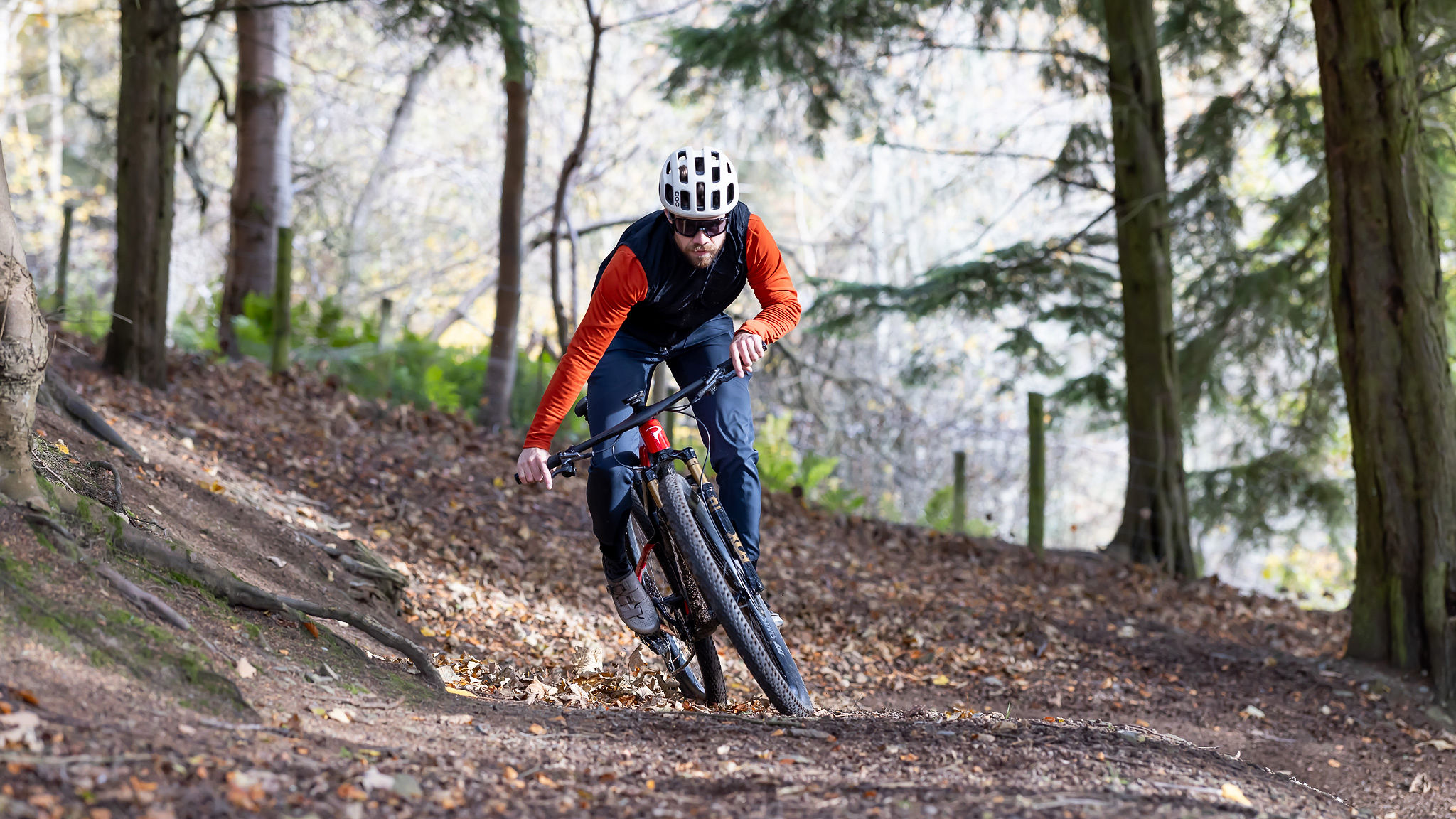Best shock pumps – our testers' pick of high-pressure pumps for the ultimate tuning
MTB shock pumps that will get your suspension settings exactly where you need them – every time
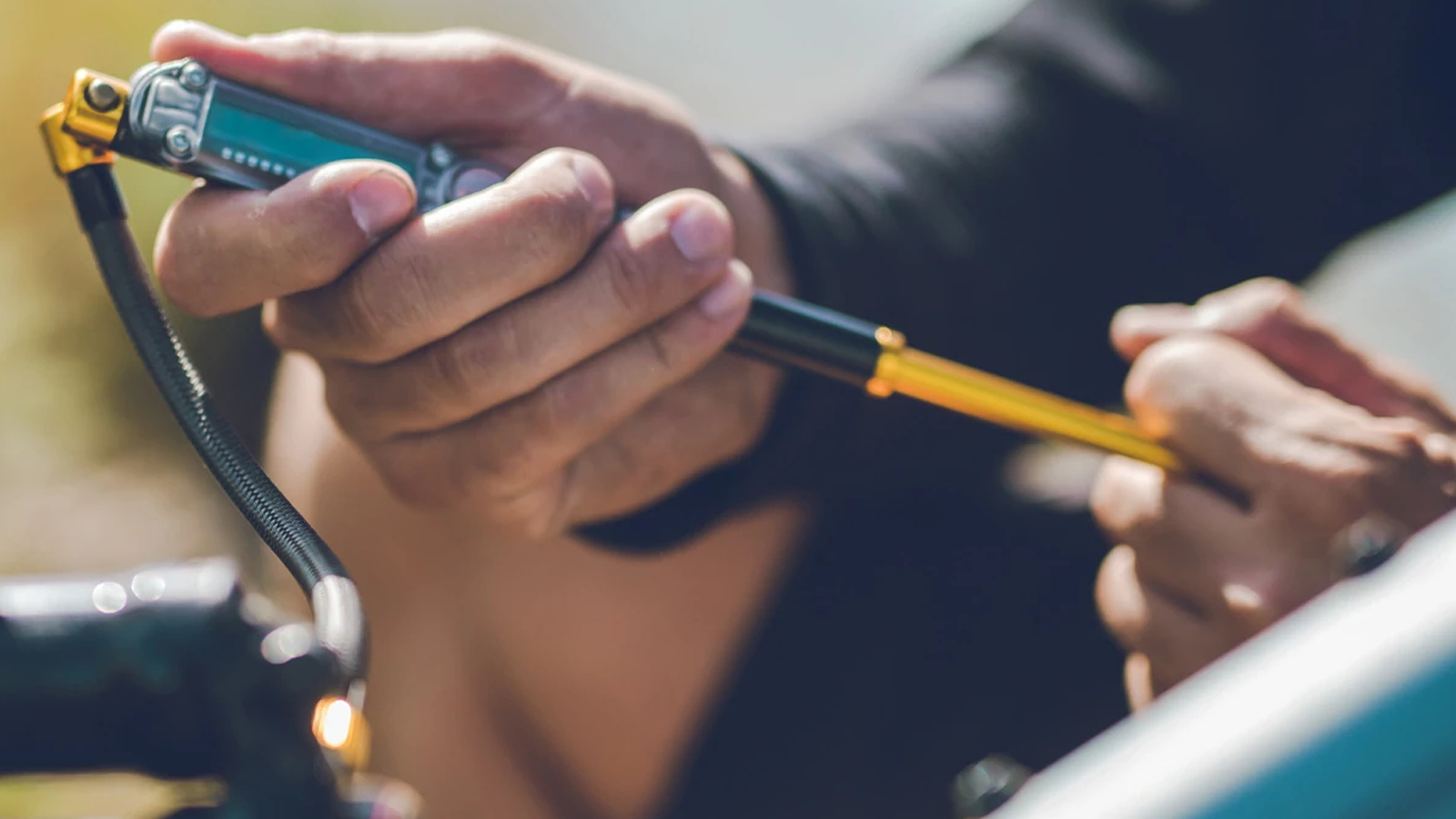
If you've got a hardtail MTB or full-suspension bike with air suspension, you'll need one of the best shock pumps to be able to set up the forks and shock. With suspension forks now found on many gravel bikes, you'll also require a shock pump here too.
Properly tuned suspension makes all the difference for ride feel and bike performance, and it's a false economy to tune shocks or forks with anything but the best shock pumps.
Since the correct spring rate – air pressure, basically – is affected by rider weight (hello heavy backpack), riding style (aggressive riders may want stiffer springs) and even temperature, frequent checks and adjustments are a very good idea. Also, even the best-sealed of units will gradually lose a little air over time. No seal can be 100 percent perfect.
To let you easily get your suspension perfectly tweaked for maximum riding performance, our expert reviewers have found the best shock pumps on the market today to suit a range of budgets. Top of our list overall is the Lezyne Digital Shock Drive pump.
For bikes with air-sprung suspension, a shock pump is one of the mountain bike essentials. For more general tips on how to choose and use a shock pump, keep reading to the bottom of the page, or check out our article on how to adjust your mountain bike suspension.
If you're considering buying a new bike, why not head over to our guide to the best full suspension bikes on the market today. And if you need any additional info on choosing the right shock pump for you, see our explainer section at the bottom of this article.
The quick list
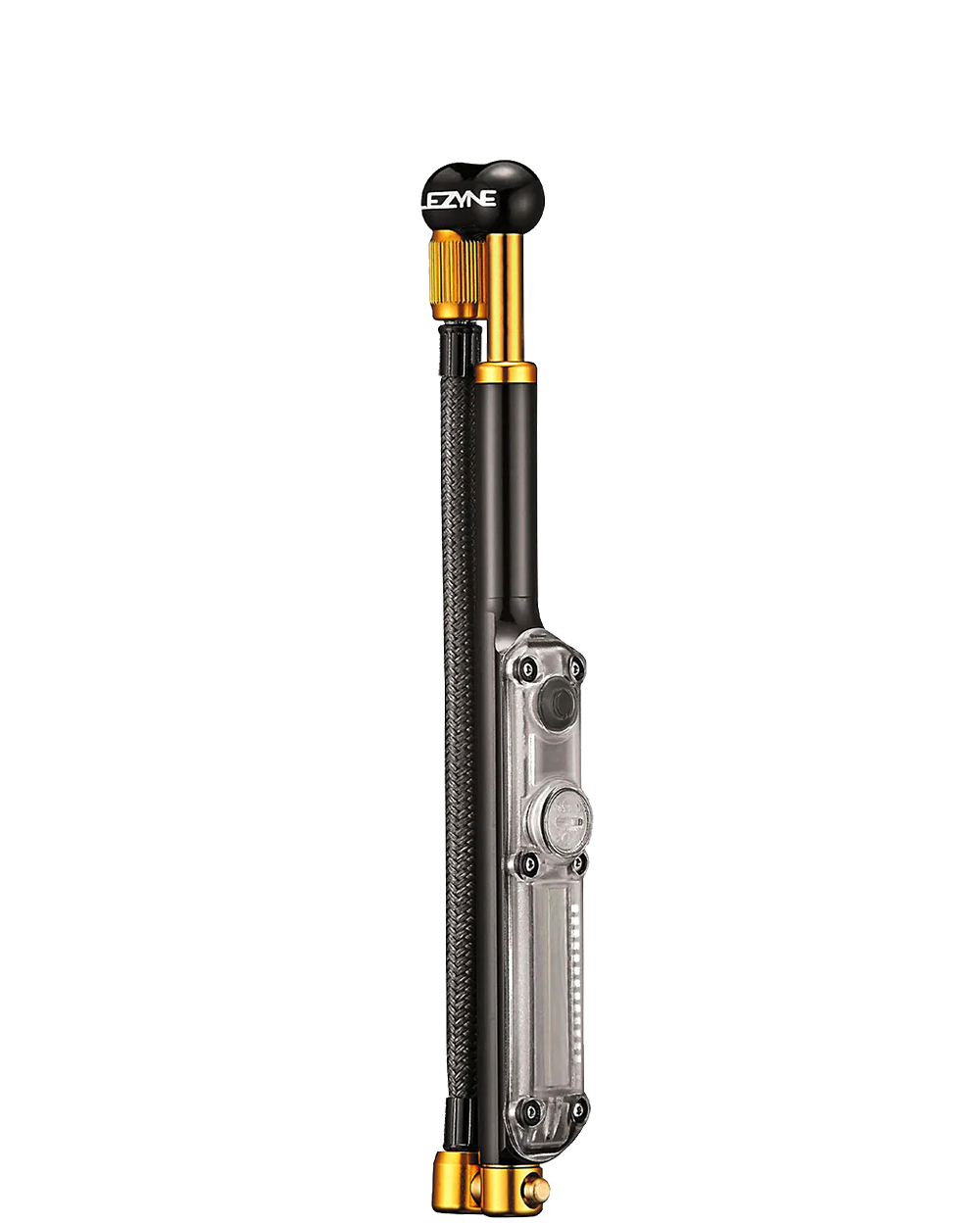
Best shock pump overall
Easy to use, slim shock pump with a premium finish for the keen trailside tuner.
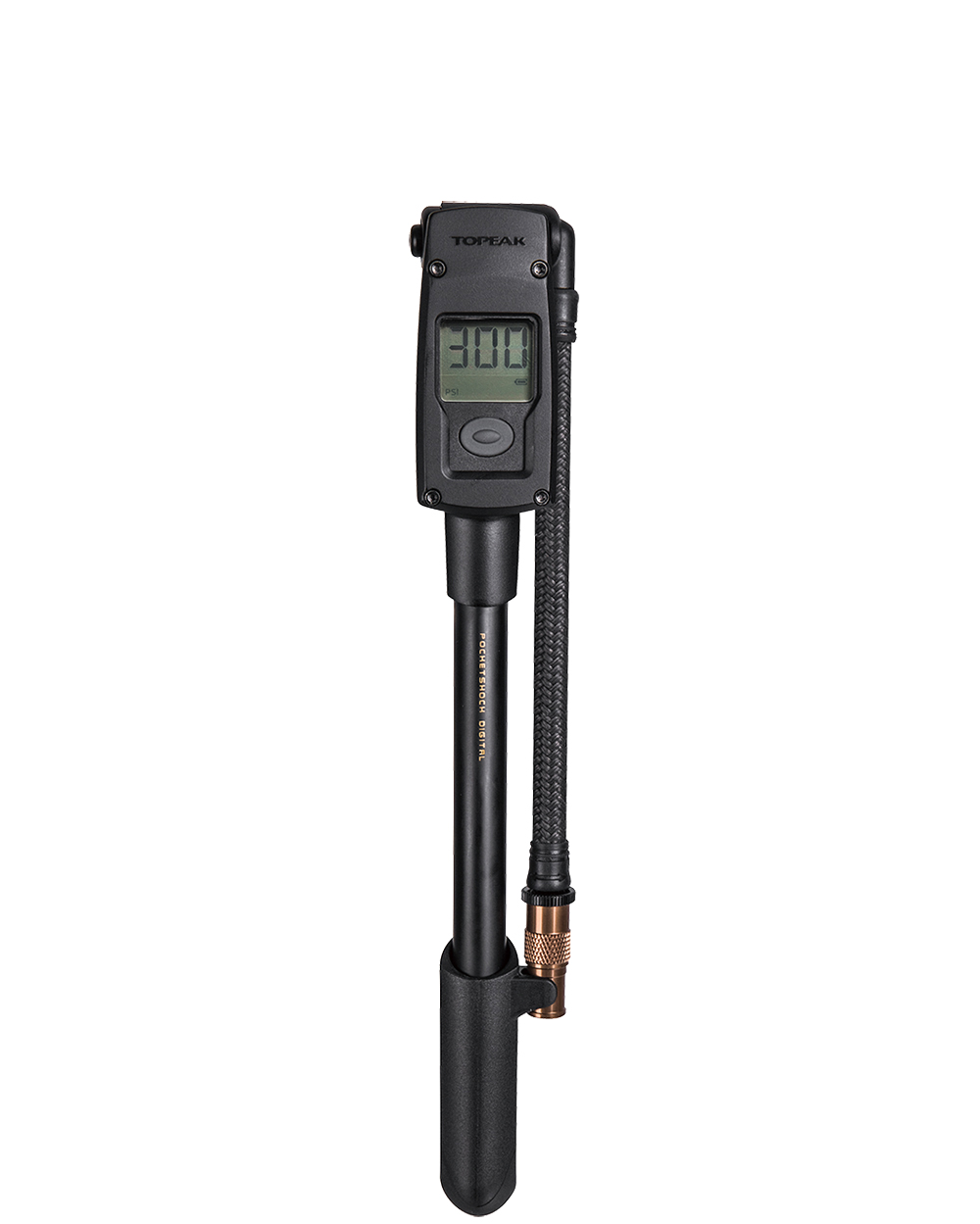
Best shock pump for display
A compact shock pump with a large, easy to read, digital display.
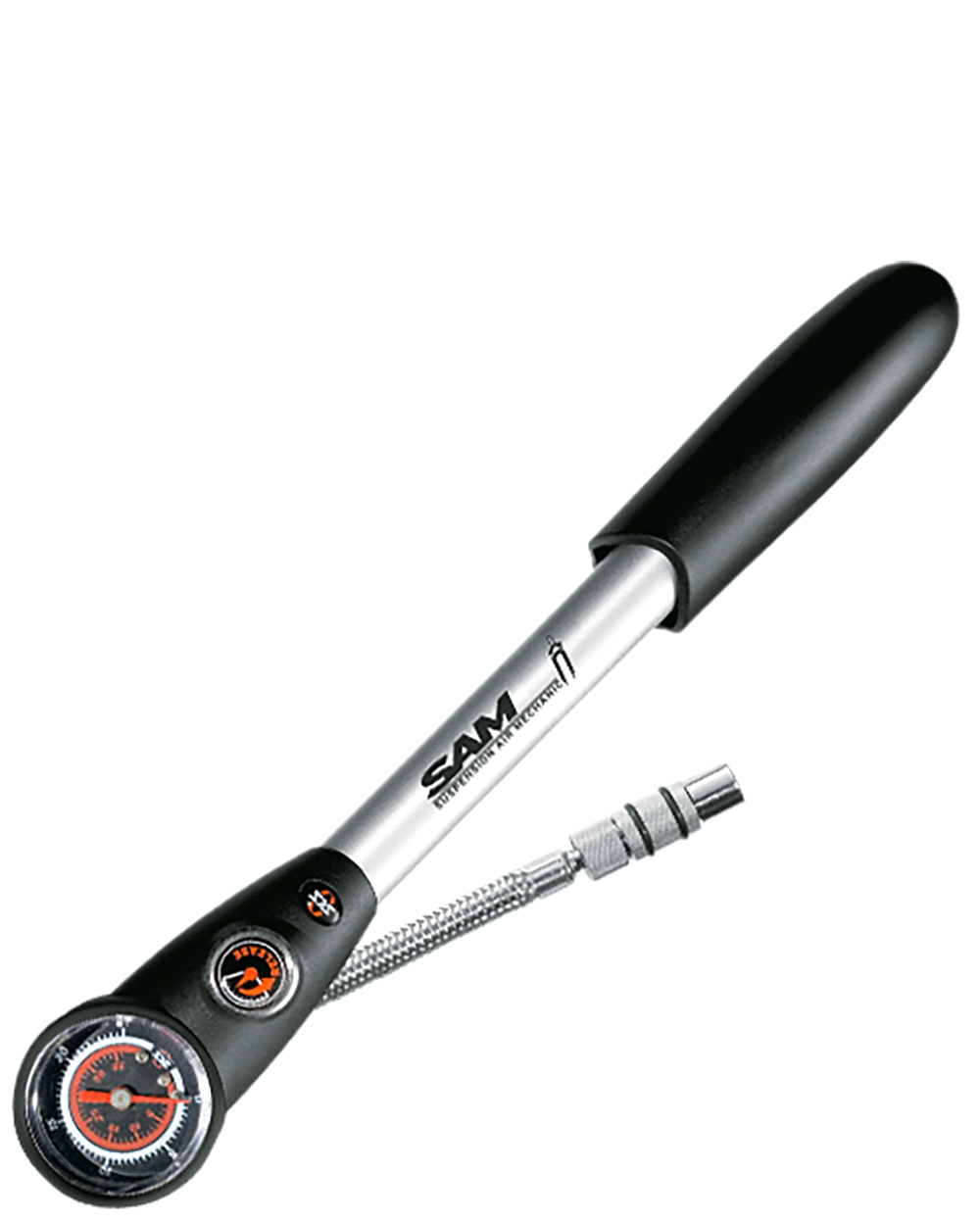
Best shock pump for valve design
Suspension pump with a clever design so it loses no pressure when you take it off.
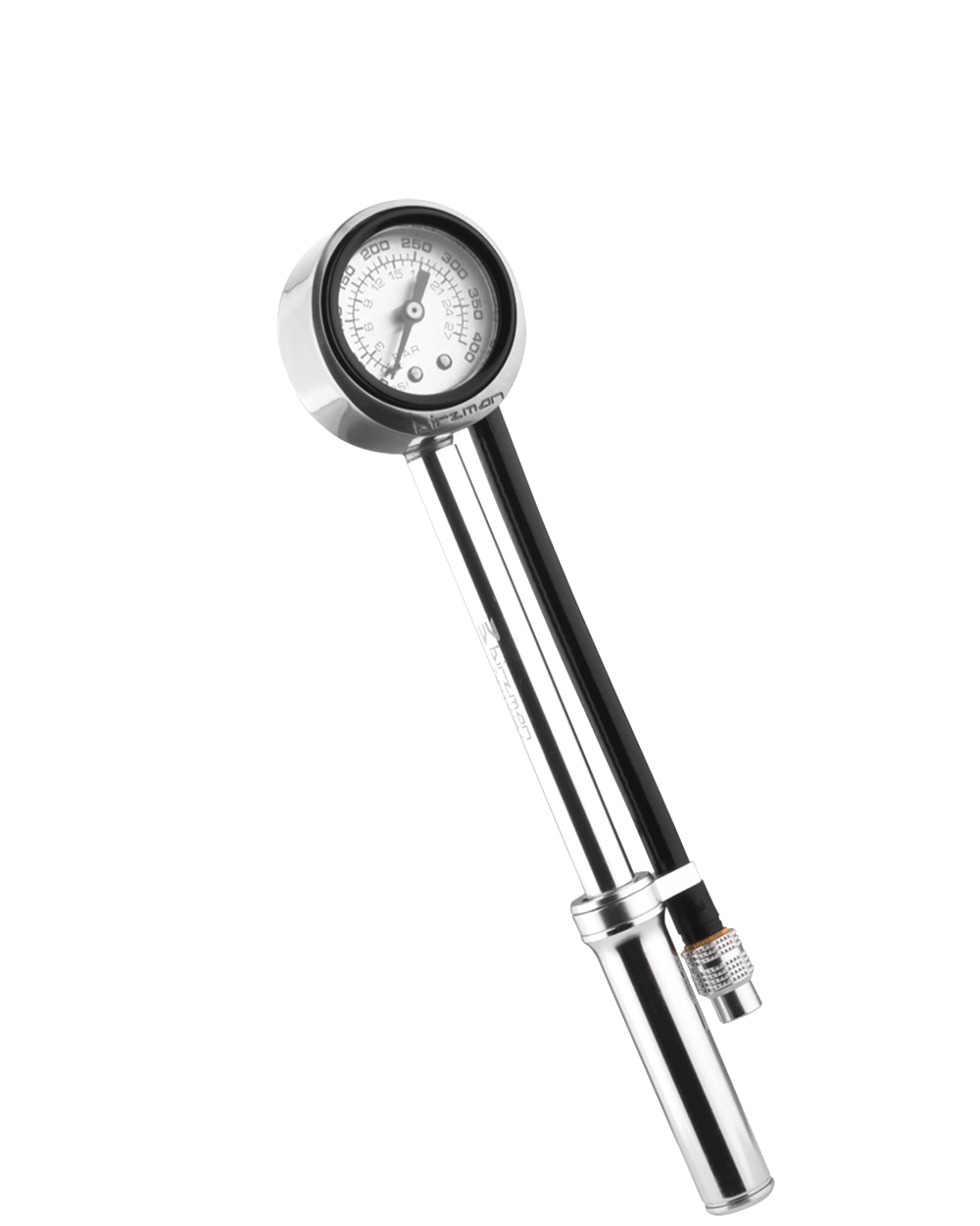
Best pocket sized shock pump
Brilliant for high pressures with a good-sized analog pressure gauge that's easy to read.
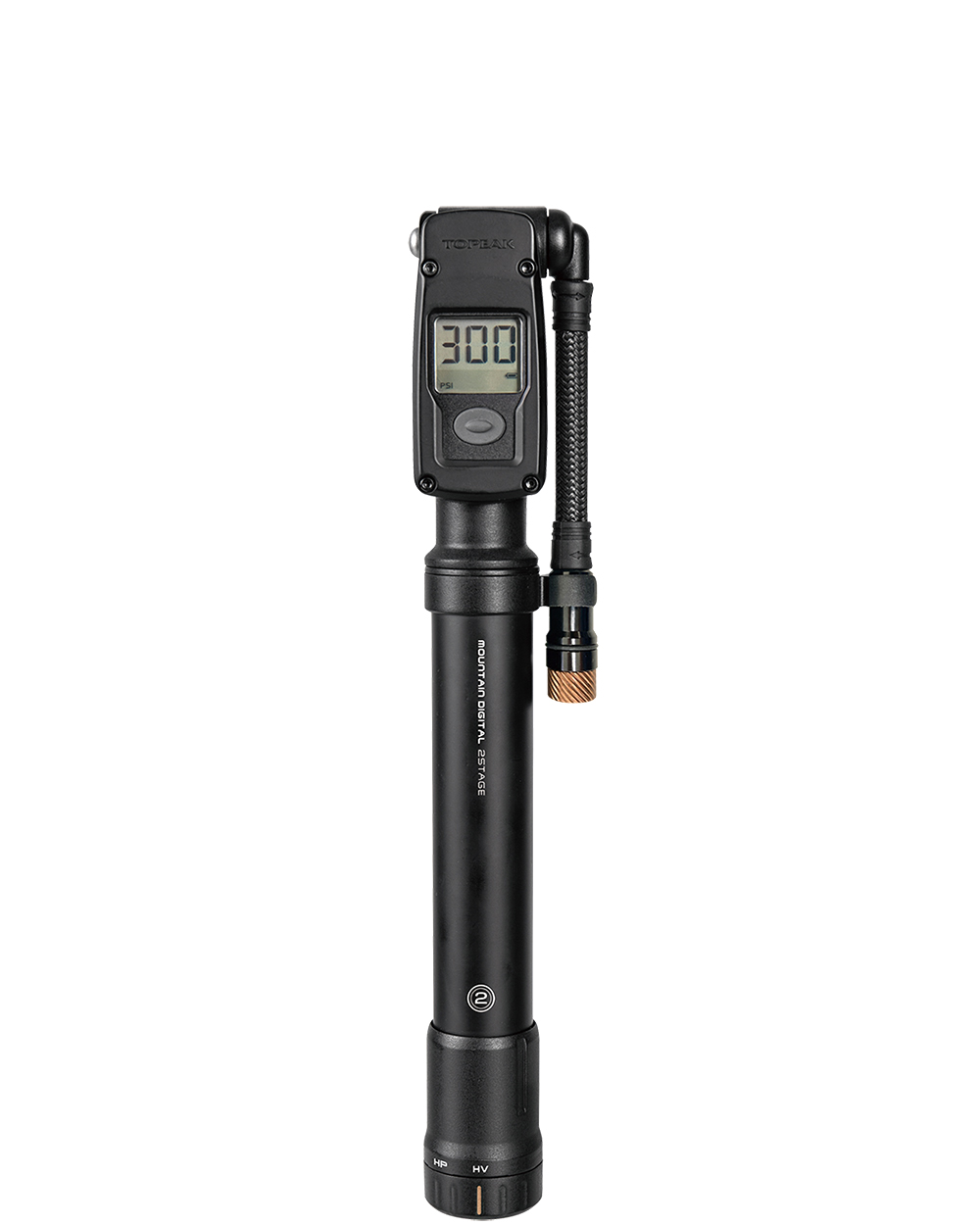
Best multi-purpose shock pump
A 2-in1 pump for tires and suspension, with good accuracy and a great, bombproof action.
The best shock pumps for mountain biking
Why trust BikePerfect
1. Best overall
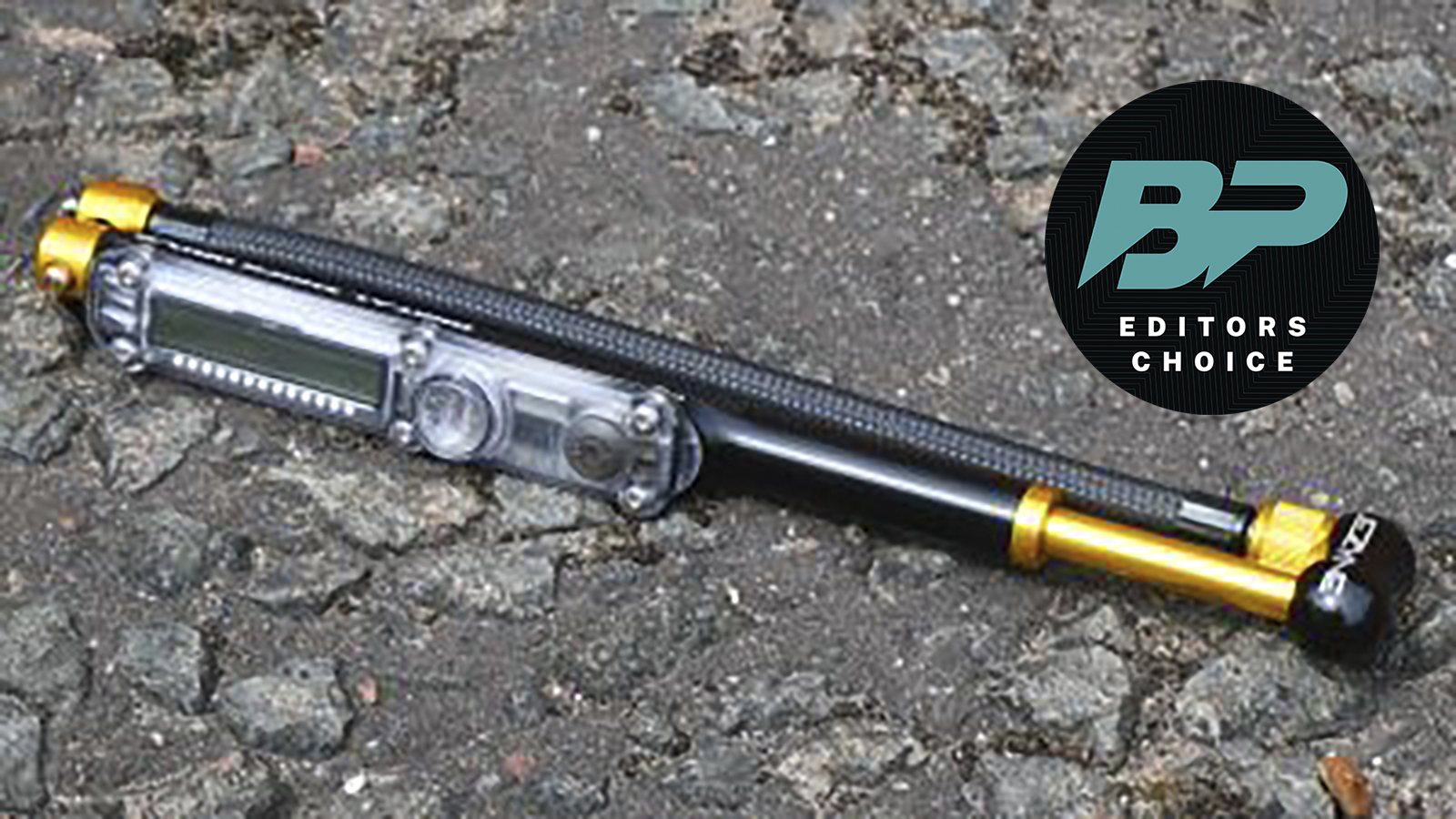
Specifications
Reasons to buy
Reasons to avoid
The Lezyne Digital Shock Drive certainly has some sleek looks, combining a reinforced tube and compact display with black and gold colors, but it’s not a case of style over substance at all.
The ergonomic design allows you to get a good amount of pressure going, while the flexible hose is long enough to reach awkward shock valves and tucks away neatly after use.
The digital display shows what pressure you’re at very clearly, while a release valve allows you to let some out a little at a time if you’ve overdone it – a small detail that makes a big difference in use.
In our testing, we found its premium feel and simple operation made this an excellent pump to use. For more info, check out our full Lezyne Digital Shock Drive review.
2. Best display
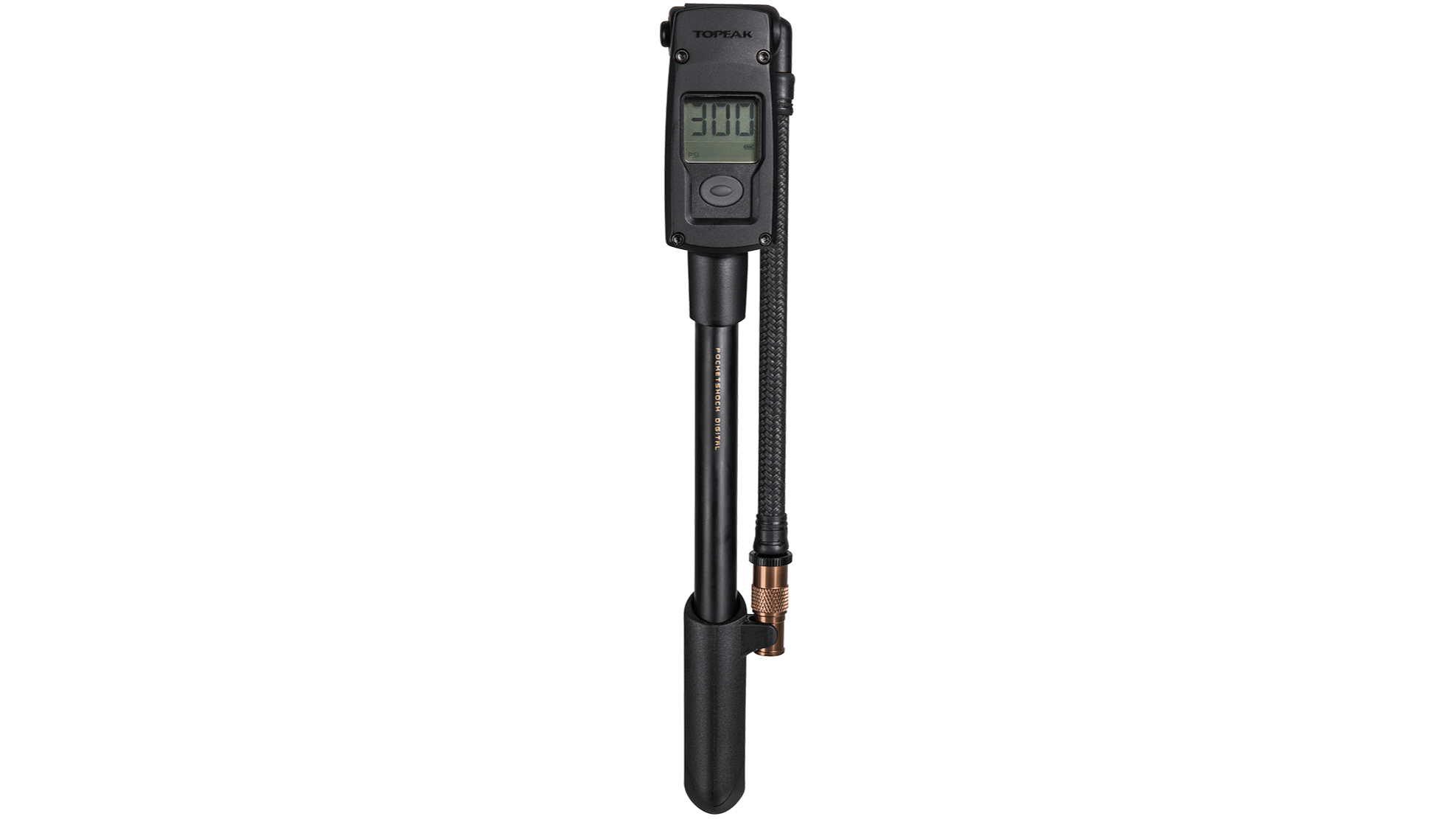
Topeak Pocketshock Digital
Specifications
Reasons to buy
Reasons to avoid
The Topeak Pocketshock Digital is based around an aluminum barrel, and has a tough, dual-density polymer handle. It’s easy to use, with a large digital display that makes keeping an eye on shock pressure easy.
The flexible hose also rotates so it’s easy to get it in the right position for awkward valves, the connector is secure, and you get an air release button for easy fine-tuning.
3. Best valve design
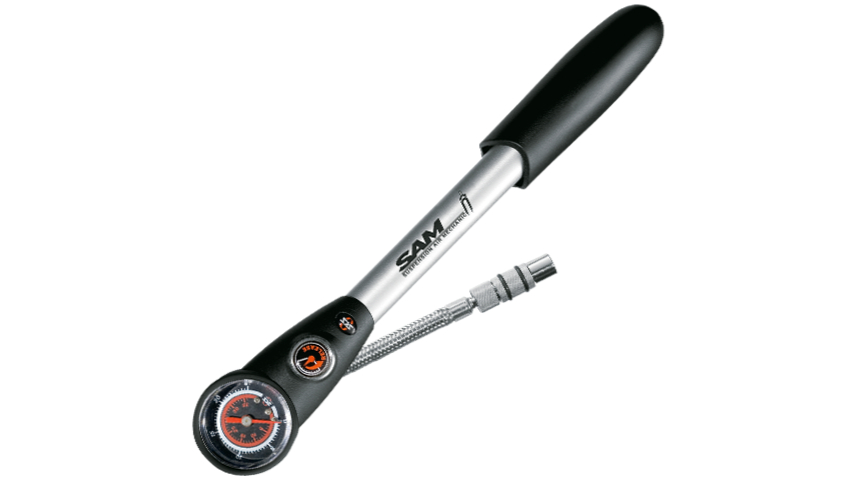
SKS SAM suspension pump
Specifications
Reasons to buy
Reasons to avoid
If one of the things you hate about (often small) pressure adjustments is accidentally blasting air out when attaching or removing the valve, this SKS pump is the one for you – SAM stands for Suspension Air Mechanic, and it stops that happening.
This analog pump has a two-stage threaded connector which attaches to the valve without opening it, meaning you can snug it on securely before opening the second stage – and the valve – to allow the pump to work.
Closing it again before removing the hose means air can't escape post-adjustments, either. There is also a pressure release button for when you do want to let a bit of air out.
The design is quite bulky and the hose quite short, so it's not the best for backpack duties, but it sits nicely in the hand and is a doddle to use.
4. Best compact size
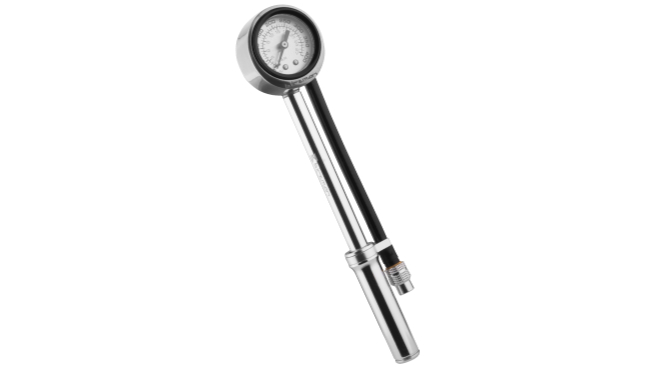
Birzman Salut shock pump
Specifications
Reasons to buy
Reasons to avoid
This rather beautiful-looking Birzman Salut shock pump is constructed from CNC-machined aluminum, and is prettier than you might otherwise expect given the price.
It can handle up to a whopping 400psi (more than any other pump here) and measure it precisely too, with a good-sized analog pressure gauge that's easy to read. It also has the requisite pressure release button to let a single psi out at a time if necessary.
Birzman has what it calls an ‘Air Lock’ designed into the threaded valve head, which essentially means the pump can't/shouldn’t blurt out any of your carefully-adjusted air pressure when attaching or removing the valve.
5. Best multi-purpose
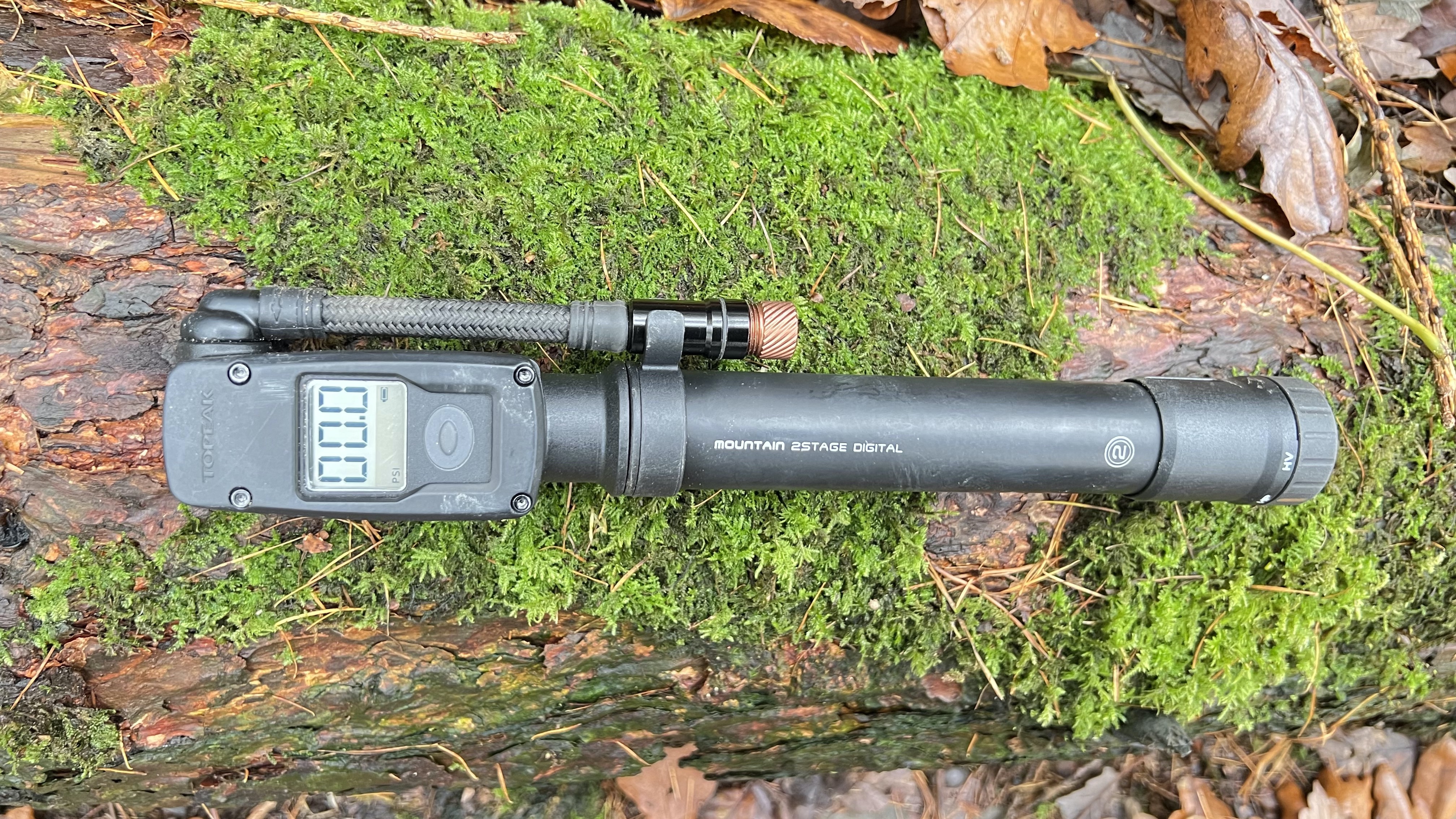
Specifications
Reasons to buy
Reasons to avoid
Topeak's Mountain 2Stage Digital is a dual-action mountain bike tire and shock pump, and, although at first glance it looks bulky, it's actually more compact, lighter, and cheaper than two similar quality separates.
It has a two-position rubberised dial on the base to switch between HV (a High Volume 84cc stroke for tire inflation) and HP (a High Pressure 11cc stroke for suspension inflation). The composite head includes the LCD display for the digital gauge and the short swivelling braided hose. This has a pressure release button on the base and a two-piece alloy valve head on the other.
In our testing we found the ‘2Stage’ switch simple and intuitive to use with clear labeling. The head required a bit more skill/patience, but the big digital screen which toggles through PSI, bar and KG/CM is easy to use.
For more, read our full Topeak Mountain 2Stage Digital pump review.
How to choose the best shock pumps
Tuning your suspension and tweaking the air in your suspension fork and shock should be part of your regular ride routine, and while you can get lost in air pressure and weight values, it’s worth keeping at least half an eye on it – it won't handle its best if you've essentially got the wrong rate springs in it. With that in mind, there are a few things to be aware of when looking for the best shock pump.
Do I need a digital or analog gauge on a shock pump?
This depends a fair bit on where you're using your pump. Digital displays are precise and usually very easy to read, but those displays inevitably need powering – and batteries run out. Stashed away in a freezing pack, they're going to suffer sooner rather than later, and there's no point carrying a really accurate pump if it's dead and you have to guess anyway.
Analog dials obviously don’t need batteries, so will always work when you need them (they're no more vulnerable to crash damage than digital, in reality), but dials are harder to read if you're trying to be very precise. Forks tend to use fairly low pressures, making accurate readings super-important.
Broadly speaking, analog is better for trail use and digital rules in the workshop. Either style will do the job, but if accuracy is of most importance to you, go digital.
What's the best size and shape of a shock pump?
Some riders like to carry a shock pump with them, and if you’re out for a multi-day adventure or love to obsess over pressure, then you want to make sure you choose a pump that’s small and streamlined enough to fit in your pack without taking up too much space or weighing a ton.
On the other hand, if most of the setup you’ll be doing is at home or at the trailhead and the pump will be staying behind, this is less of an issue.
But one thing that is worth considering is how ergonomic it is to use. That pumping action can get very tedious if your hands keep slipping or if the pressure release valve is right where you want to hold the pump body.
How can I avoid losing air when I take the shock pump off?
There are few things as irritating when setting your bike up as that hiss when removing your shock pump valve; that’s the sound of all the carefully tuned air pressure escaping into the atmosphere.
Some pumps have systems to help prevent this – something that closes the valve with the hose still physically attached, essentially, so nothing can escape as you loosen it. You may still hear a brief hiss, but that's the air leaving the shock pump, not your suspension.
How we test the best shock pumps
All the shock pumps tested here have been put through their paces over several months in a variety of conditions, so we can assess them for their accuracy, ease of use, ergonomics, portability and price.
Meet the testers

Guy Kesteven is Bike Perfect’s tech editor. He spent a few years working in bike shops before starting writing and testing for bike mags in 1996. Since then he’s written several million words about several thousand test bikes and a ridiculous amount of bike components and riding gear.

Based in Edinburgh, Graham has some of the best mountain biking and gravel riding in the UK right on his doorstep. With almost 20 years of riding experience, he has been involved in gravel riding and racing for many years.

Aoife loves a bike-based adventure, whether it’s out in the mountains on her MTB or exploring new places by road or gravel. She’s tested a lot of bikes and kit, and is passionate about making cycling accessible for everyone.

Rich Owen joined the BikePerfect team as editor in 2021. He's worked as a journalist and editor for over 24 years, with 12 years specializing in cycling media. Rich bought his first mountain bike (a rigid Scott Tampico) in 1995 and has been riding MTB for almost 30 years.
Current rides: Merida One-Forty 6000, Banshee Paradox, YT Jeffsy Core 3, Saracen Ariel 30 Pro
Height: 175cm
Weight: 69kg
- Aoife Glass
- Guy KestevenTechnical-Editor-at-Large
- Graham CottinghamSenior reviews writer, Bike Perfect
